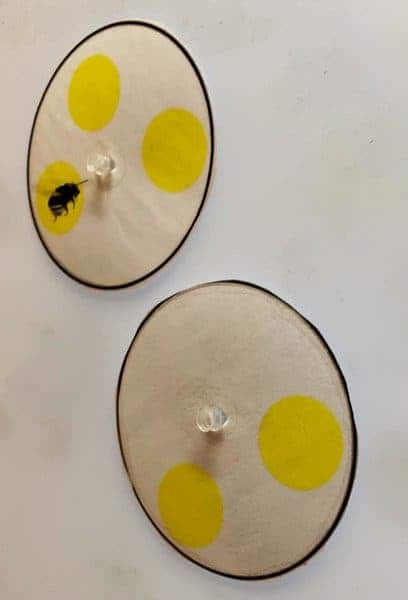Not only can bees count — but they can do so using laughably few brain cells.
One team of researchers from the Queen Mary University of London looked into how bees count. The insects, they report, draw on a brain-wiring trick to allow them this skill using very small numbers of neurons. In order to understand how bee brains handle numbers, the team simulated an extremely simple brain network on a computer.
Despite containing just four neurons (far fewer than a real bee can boast), this artificial brain could still handle the task. Lab results showed that it could easily count small quantities of items when inspecting one item closely and then inspecting the next item closely and so on, which is the same way bees count. This differs from humans who glance at all the items and count them together.
Counting bee
Previous research has shown that bees can count — usually up to four or five items. Interestingly enough (and perhaps, uniquely among non-humans), they can also grasp the concept of zero when trained to choose ‘less’.
However, new research reveals something really surprising: it’s possible that bees have no clue what numbers (or other numerical concepts) are. By using specific flight movements to closely inspect items, the bees draw on their visual input to simplify the task of counting so much, it requires minimal brainpower. This shows that the intelligence of bees (potentially other animals’ as well) can be based on a very small number of nerve cells, as long as these are wired together in the right way.
“Careful examination of the actual inspection strategies used by animals might reveal that they often employ active scanning behaviours as shortcuts to simplify complex visual pattern discrimination tasks,” says lead author Dr Vera Vasas, from Queen Mary University of London. “Hopefully, our work will inspire others to look more closely not just at what cognitive tasks animals can solve, but also at how they are solving them.”
She goes on to explain that although counting is generally considered to “require high intelligence and large brains,” the findings show it can be done with a small — but properly-structured — network.
“We suggest that using specific flight movements to scan targets, rather than numerical concepts, explains the bees’ ability to count. This scanning streamlines the visual input and means a task like counting requires little brainpower.
Bees only have about one million nerve cells overall, meaning they have really, really low brainpower (no offense, bees). Your average human, for example, boasts upward of 86 billion nerve cells.
Still, this limitation forced evolution to get creative, and it did. The bees overcome their relative lackluster hardware with fancy computational algorithms, the team reports. To model how these tiny insect brains receive information, the team analyzed the point of view of a bee as it flies close to the countable objects and inspects them one-by-one.

A bumblebee choosing between two patterns containing different numbers of yellow circles.
Image credits Lars Chittka.
This data was later fed to the simulated brain. It made reliable estimates of the number of items on display based on this video feed, the team reports — in essence, it could count. As such, the findings could also have implications for artificial intelligence.
“These findings add to the growing body of work showing that seemingly intelligent behaviour does not require large brains, but can be underpinned with small neural circuits that can easily be accommodated into the microcomputer that is the insect brain,” says lead author Professor Lars Chittka, also from Queen Mary University of London.
The paper “Insect-inspired sequential inspection strategy enables an artificial network of four neurons to estimate numerosity” has been published in the journal iScience.










